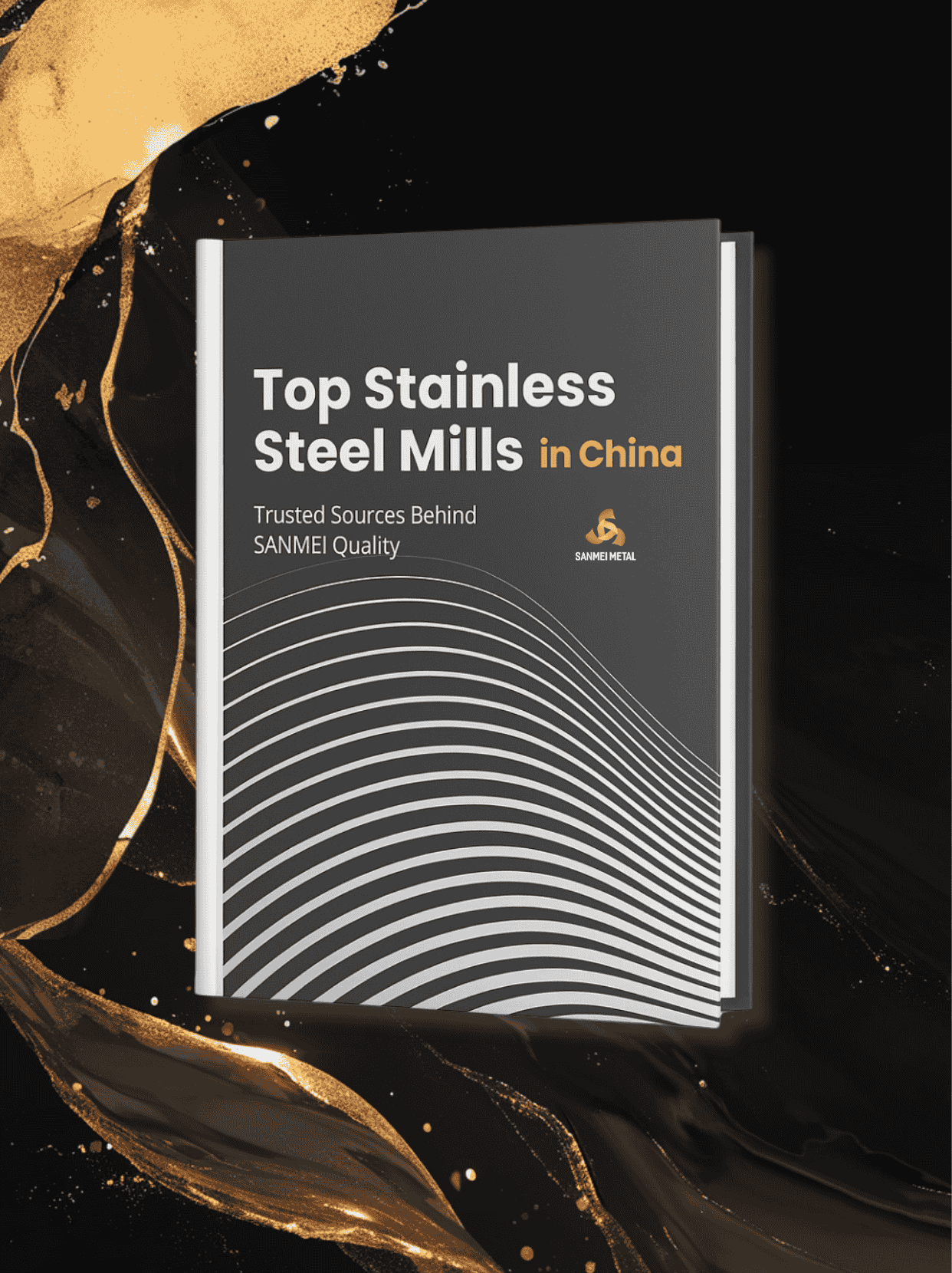439 Paslanmaz Çelik: Sıradan Bir Paslanmaz Çelikten Daha Fazlası
Paslanmaz çelik dünyasında, 439 paslanmaz çelik benzersiz özellikleri ve uygulamalarıyla öne çıkıyor. Sıradan bir paslanmaz çelik türü değil; zorlukların üstesinden gelmek için tasarlanmış bir malzeme. Bu makale, sizi paslanmaz çeliği özel kılan şeyin ne olduğunu derinlemesine inceleyecek. 439 paslanmaz çelik Modern endüstri ve tasarımda nasıl favori haline geldiğini göstermek için 304, 316 ve 430 gibi yüksek kaliteli, genel amaçlı paslanmaz çelik sınıflarıyla karşılaştırılmıştır.
439 Paslanmaz Çelik: Gizli Şampiyon
439 paslanmaz çelik, biraz teknik bir isimle anılsa da, aslında endüstriyel tasarım ve mühendislik alanlarında gizli bir şampiyondur. Mükemmel korozyon direnci, şekillendirilebilirliği ve gerilim korozyon çatlamasına karşı direnciyle ünlüdür, ancak bu özellikler buzdağının sadece görünen kısmıdır.
439 Paslanmaz Çelik'in Benzersiz Satış Noktaları
- Çevresel Uyum: 439 paslanmaz çelik sadece korozyona dayanıklı olmakla kalmaz; hafif aşındırıcı ortamlardan yüksek sıcaklık koşullarına kadar çeşitli ortamlarda iyi performans gösterir.
- Maliyet Etkinliği: 304 paslanmaz çeliğe kıyasla 439, gerilim korozyon çatlağına karşı mükemmel direnç gösterirken maliyet avantajı da sağlar ve bu da onu bütçeye duyarlı birçok proje için ideal bir seçim haline getirir.
- Tasarım Esnekliği: 439 paslanmaz çeliğin yüksek sünekliği, şekillendirme işlemi sırasında sertleşmeden veya çatlamadan çeşitli şekillere kalıplanabilmesi nedeniyle tasarımcılar arasında favori haline gelmesini sağlıyor.
439 Paslanmaz Çelik Uygulamalarının Sanatı
439 paslanmaz çeliğin kullanım alanları sadece endüstriyel alanlarla sınırlı değil; sanat ve tasarımda da kendine yer bulmuştur:
- Otomotiv Egzoz Sistemleri:439 paslanmaz çeliğin yüksek sıcaklık ve korozyona dayanıklılık özellikleri onu otomotiv egzoz sistemleri için ideal bir malzeme haline getirir.
- Mimari Dekorasyon:Mimari dekorasyonda 439 paslanmaz çelik, dayanıklılığı, işlenebilirliği ve estetik görünümüyle öne çıkarak modern yapılara parlaklık katıyor.
- Mutfak Ekipmanları:Toksik olmaması ve paslanmaya karşı dayanıklı olması nedeniyle 439 paslanmaz çelik, mutfak ekipmanlarında sağlıklı pişirme için en iyi seçimdir.
- Isı Eşanjörleri:Yüksek sıcaklık oksidasyonuna karşı direnç gerektiren ortamlarda, 439 paslanmaz çeliğin üstün performansı onu ısı eşanjörleri için ideal hale getirir.
439 ve Diğer Paslanmaz Çelikler
Doğru malzemeyi seçmek, özellikle korozyon direnci, ısı direnci ve maliyet gibi birden fazla faktör göz önünde bulundurulduğunda, proje başarısı için çok önemlidir. Bu makale, 439 paslanmaz çeliği inceleyecek ve 304, 316 ve 430 paslanmaz çeliklerle karşılaştırarak, okuyucuların belirli uygulamalarda 439'u seçme nedenlerini netleştirmelerine yardımcı olmayı amaçlamaktadır.
439'u 304, 316 ve 430 Paslanmaz Çeliklerle Neden Karşılaştırmalıyız?
Çeşitli paslanmaz çelik malzemeler arasında en yaygın kullanılanlar 304, 316 ve 430'dur ve her biri belirli alanlarda benzersiz avantajlara ve uygulamalara sahiptir. Bu üç paslanmaz çeliği 439 ile karşılaştırmak birkaç nedenden dolayı anlamlıdır:
- Ana Akım Materyaller: 304 ve 316, mükemmel korozyon direnci ve mekanik özellikleri nedeniyle endüstrilerde yaygın olarak kullanılan östenitik paslanmaz çeliklerdir. 430 ise, uygun maliyeti ve uygulanabilirliğiyle bilinen yaygın bir ferritik paslanmaz çeliktir. Bu ana akım malzemelerle karşılaştırıldığında, 439'un benzer uygulamalardaki rekabet avantajı açıkça görülebilir.
- Çeşitli Uygulama Senaryoları: 304 ve 316, gıda ve kimya endüstrilerinde yaygın olarak kullanılırken, 430, korozyon direnci gerektiren maliyet açısından hassas alanlarda yaygındır. 439'un ısı direnci ve şekillendirilebilirliği, onu özellikle otomotiv egzoz sistemleri ve yüksek sıcaklık ortamları için uygun hale getirir. Karşılaştırma, 439'un çeşitli uygulamalardaki uyarlanabilirliğini ve avantajlarını vurgulamaktadır.
- Kapsamlı Performans Değerlendirmesi: 439 ile 304, 316 ve 430 arasında performans, maliyet ve uygulanabilir senaryoların kapsamlı bir karşılaştırmasını yaparak, okuyucular 439'un güçlü ve zayıf yönleri hakkında daha derin bir anlayış kazanabilir ve bilinçli malzeme seçimleri yapmak için önemli kanıtlar sağlayabilirler.
439 ve 304 Paslanmaz Çeliklerin Karşılaştırılması
304 paslanmaz çelik, özellikle gıda ve kimya endüstrilerinde mükemmel korozyon direnci nedeniyle yaygın olarak kullanılmaktadır. Ancak, yüksek sıcaklık ortamlarında 439 paslanmaz çelik daha iyi performans gösterir ve maliyeti genellikle 304'ten daha düşüktür. Yüksek sıcaklık dayanımı gerektiren uygulamalarda, maliyetleri kontrol altında tutarken performans ihtiyaçlarını karşılayan 439 daha akıllıca bir seçim olabilir.
439 ve 316 Paslanmaz Çeliklerin Karşılaştırılması
316 paslanmaz çelik, özellikle deniz ve kimyasal ortamlarda iyi performans göstererek en korozyona dayanıklı malzeme olarak kabul edilir. Ancak yüksek maliyeti, bazı uygulamalar için daha az ekonomik olmasını sağlar. Aşırı korozyon direnci gerektirmeyen uygulamalar için 439, performanstan önemli ölçüde ödün vermeden daha düşük maliyetli bir alternatif sunabilir. Bu nedenle, malzeme seçimi yaparken 439 cazip bir alternatiftir.
439 ve 430 Paslanmaz Çeliklerin Karşılaştırılması
430 paslanmaz çelik daha ucuz olsa da, korozyon direnci nispeten zayıftır. Bazı uygulamalarda, özellikle yüksek sıcaklık ortamlarında, 439 performans ve fiyat arasında daha iyi bir denge sağlayabilir. Dahası, 439 mekanik özelliklerde daha iyi performans göstererek karmaşık tasarımlara daha kolay uyum sağlar.
439 paslanmaz çelik, sıradan bir paslanmaz çelik türü değil; modern zorlukların üstesinden gelmek için özel olarak tasarlanmış yüksek performanslı bir malzemedir. Çok yönlülüğü ve olağanüstü performansı, endüstri, sanat ve tasarımda önemli bir yer edinmesini sağlar. 439 paslanmaz çeliğin benzersiz özelliklerini ve uygulamalarını anlamak, ister mühendislik projeleri ister sanatsal çalışmalar için malzeme seçerken daha bilinçli kararlar almamıza yardımcı olabilir. Paslanmaz çeliğin bu gizli şampiyonu keşfedilmeyi ve kullanılmayı bekliyor. Bu şampiyonun cazibesini deneyimlemek ister misiniz? Hemen bizimle iletişime geçin.








